Incorporating Math Into Your Cold-Weather Routines
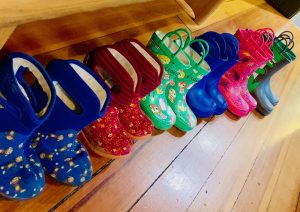
It’s November and, here in Illinois, that means cooler temperatures and winter outerwear. Getting the children dressed for outdoor play is one more way that you can meet your math standards while engaging in everyday activities. Outdoor play in the winter months includes snow or rain pants, boots, coats, hats and mittens. Getting my young group dressed for outdoor play is a challenge in itself. This is when math—specifically sequencing—comes into play.
By breaking this dressing activity down into smaller steps, we find success within the first week. This is getting ready for kindergarten. This is routine and patterns and sequence. This teaches our students to be self-sufficient. This makes our students every kindergarten teacher’s dream child!
By learning to dress themselves, children strengthen developing skills such as coordination, memory and body awareness. This process takes TIME—and we have a lot more time than working parents trying to make it to an early-morning meeting. I embrace this activity as an important part of our curriculum. We have time. We need fresh air and play. Trust me, this will improve your winter sanity! Here’s how I do it.
I make the following stations:
- Bathroom break
- Snow or rain pants
- Boots (preferably slip-on or velcro—easier to deal with the boots BEFORE the coat goes on)
- Coat
- Hat and scarf
- Mittens (preferably waterproof snow mittens, although car mittens will work fine if you’re not engaging in water play or traversing wet terrain)

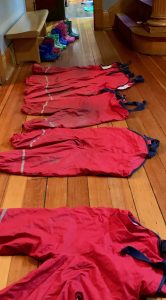
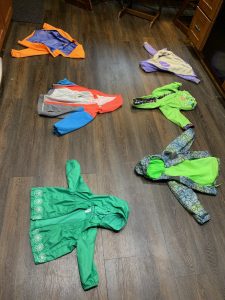
I place these stations in a row from our cubbies all the way to our exit door. Allow plenty of room between each station. One teacher I know uses all four corners of her classroom. If you have not been taught the “firefighter flip” for putting on jackets, I will let two-year-old Jonathan show you the steps:
Toes to the tag… hands slip into the armholes… and…FLIP!
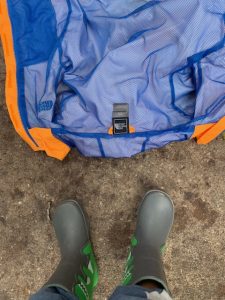
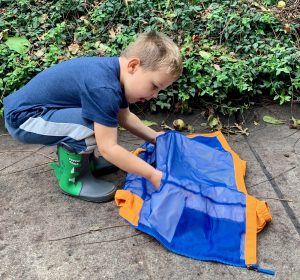
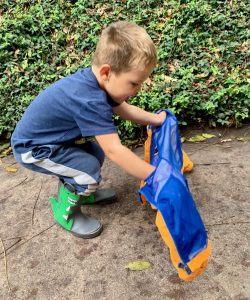
All the way, over the head… and down sink the arms… and…ta da!
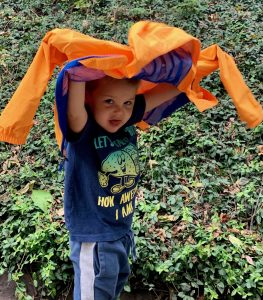
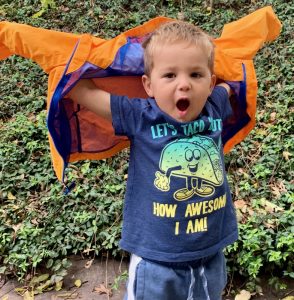

We love the firefighter flip and use it all year long. It takes a few practice sessions, but I guarantee that successful coat flipping is in your future if you are not already using this method.
At the exit door, I provide some last-minute help with hats, scarves, zippers and mittens.
For some reason, removing the cold-weather gear seems to go more quickly. I use laundry baskets as stations for removing the gear, which allows me to quickly and easily place the wet gear in the proper drying places.
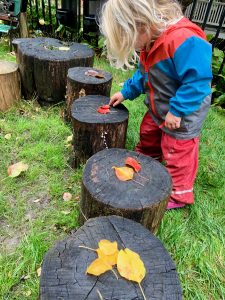
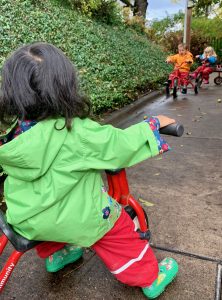
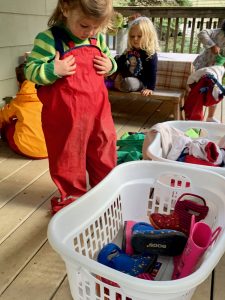
Sequence. Routine. Pattern. It’s all there. It’s all math! Regardless of the season, find a sequence in your everyday classroom activities and break it down into little steps. During these crisp, beautiful late autumn and early winter days, put on your own hat and coat and join in the fun!
This routine for out door preparation is something I never thought of before. Breaking the prep down into steps certainly makes it easier for the children. Since we have an even split of those who are independent with outdoor prep and those who are not, the children help each other..
Having the independent ones help is so wonderful! Maybe we could start a “Bundle Buddy” system? Hmmmmmm…….
i did not realize how much of these activities i did with my children without even thinking about it!
What a great concept that I never knew was a representative for patterns!
I like how each step in explained to the children and the children can plainly see each step they take before they get started.
Ha ha! It’s like leading the little peeps to the door with breadcrumbs. Some days it is a lot more work than others, but it is always worth the work. It’s really interesting to watch how they always find the warmest area in the outdoor classroom. Without discussion of wind direction or sunlight, instinctively they will land there. Take notice! It’s really amazing!
Firefighter flip is favorite way to initiate the children independence putting their coats on!!!
I like how you show how you break down the winter gear steps.
I enjoyed the firefighter flip. The sequence for helping little ones become more independent is an ideal concept that has been around for a while. Its good to know technic is still in use.
That good ole firefighter flip has been around forever at our program. We have some second generation families, and the parents always remember it!
Agree it is a favorite and works great it is an awesome way to learn.
Definitely, will be introducing this to my children. This is a awesome way to teach children how to be independent and put on their jackets.
Teaching children how to engage and learning math at an early age as teacher teaches them they learn to problem solved as well.
I like when the children were sitting at the table with the teacher they were being engaged in the conversation as they learned about math problems problem solving.
Teaching their children communication dressing motor and play are all part of Early Childhood math and they learn from their teachers how to communicate as well through language in early childhood math.
Children learn math through everyday learning mathematic comes with communicating and connecting children to Math early two books and language arts.
I love the fireman flip and how getting dressed can be turned into a pattern.
Great ideas!
Fire fighter flip is a great way to teach independence with their jackets!
What a great way to use nature to incorporate math with the leaves.
This sounds like a lot of teacher prep. M class with their own clothes that we teach to put together. It might work better for e to just have a chart that shows them each step. I am not sure
I love these ideas! I will have to try the firefighter flip with our older two year olds for sure!
This might be hard to do for my little ones, but this would be really beneficial for them if they could get it done 🙂
Weather changes provide great opportunities for math discussions about “transitioning” from indoor to outdoor environments; discussions about clothing, temperature, surface of objects, accumulation of rain or snow, etc. Teachers can ask many questions so children can think about how they interact with different environments…Marc
I like how it is broken down into simple steps and how organized this is.
It may be a little extra time for the teachers to set up but I have never seen the grouping idea before. In the past we have had the children bring their winter coats etc. to one spot in the room. The children work to dress themselves but at times the sequence of items are mixed up in the process. I believe this would be easier for them and the sooner we would get outside!
Thanks Tracey! It took me years to figure this out! Yes, it will make your transition out the door much quicker! With outdoor time at a minimum in so many schools these days, I think this is one of the obstacles we could remove to make getting out the door so much less stressful! Thanks to all of you who have left such kind comments on this post! Try it! It’s wonderful!
As a teacher, I teach my 2 year olds to learn how to dress and undress (jackets and boots) by themselves. They’ve created a technique and are successful at it. With that, they also know the routine pattern: when we go outside, we put on our jackets, when we come back, when put it away.
Mot only using math about weather bu also self skills like how to put on their raincoat, nice!
Winter weather can be great for data collection too.
We can collect data of who has boots or who does not have boots.